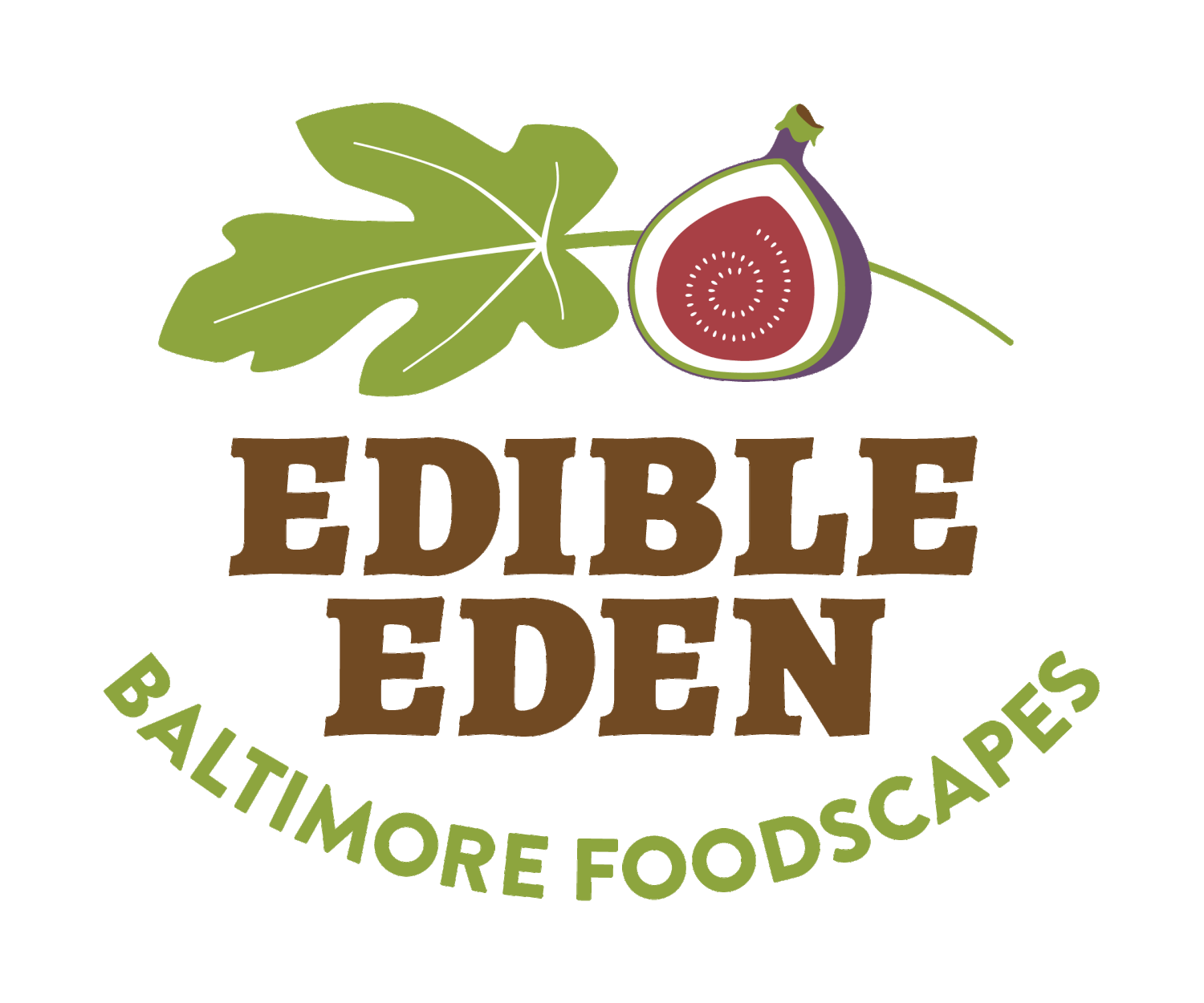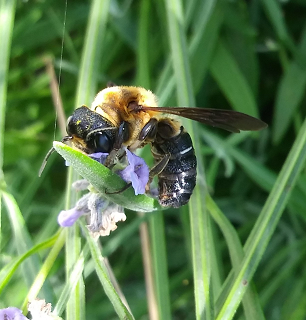In our last article on bees, we learned a little about the benefits of bees as pollinators and why they need our support to survive and thrive.
In this article, we’ll teach you how to provide that support! We’ll also tell you how to live among bees safely, and put to rest any concerns about these passive insects.
Native bumblebee and skipper butterfly on thistle.
Eliminate or reduce use of pesticides:
The widespread use of pesticides is having detrimental effects on the health of most, if not all, living creatures. There are studies detailing the effects of these toxic chemicals on humans, fish, amphibians and birds. It’s clear that eliminating or reducing pesticide use can have benefits far beyond the benefits to native bee populations.
As part of our gardening practices, we avoid pesticide use as much as possible and use carefully selected organic products when necessary. However, not all organic pesticides are safe. Do your research before applying any pesticides, use them sparingly, and apply them in ways that are less likely to harm visiting pollinators. Better yet, monitor your plants to see if the pests are truly a problem or if they are part of a healthy ecosystem, attracting beneficial insects to keep their populations in check.
A tiny bee-mimicking fly drinking nectar from Bronze Fennel. Many species of flies are also beneficial pollinators, and some have even evolved to look like bees.
2. Provide sources of nectar and pollen:
Bees are struggling to keep up with the constant loss of habitat due to land development for commercial, agricultural, or residential purposes. One way that we can help to ease that burden is by reintroducing habitat to ecologically dead space, such as our lawns or patios!
There are many pollinator friendly plants available in the horticultural trade, but you’ll always get the most bang for your buck, or the most ecological benefit for your available space, by choosing native plants. Well-functioning ecosystems have plants and animals (including insects) that have evolved together and developed complex relationships.
While any bee may be able to get plentiful nectar from non-native zinnias, many native bees are specialists who use specific native plants to meet their mates or collect the pollen that they feed to their young. Many of these plant/pollinator mutualistic relationships are yet to be discovered, but it’s a sure thing that planting native is the way to discover them.
3. Maintain a watering station:
You might not think that bees get thirsty while buzzing around all day drinking nectar, but that’s like thinking that we wouldn’t get thirsty just because we eat juicy fruits! Water is just as important to bees as to any other creature.
While honeybees like to drink from a shallow pool of mucky water (the dirtier the better, apparently!), most native bees collect their water from the leaves of plants or other surfaces. Mason bees need a source of wet, muddy ground in the spring while they are building their nests.
Whether you decide on providing a shallow dish of water (filled with marbles or pebbles to prevent the bees from drowning) or simply watering some of your perennial plants from overhead in the morning, the bees will thank you.
4. Make space for physical habitat:
A good habitat is more than a source of food and water, or else some of us would probably live in our favorite restaurants. Just like us, bees need space to sleep and raise their kids.
Most native bees don’t live in large colonies like the social honeybees that we are most familiar with. In fact, most native bees are solitary species that don’t live in colonies at all! Providing a range of nesting habitats for native bees is not only easy, it can also give you an excuse to not have to work as hard in your garden.
The Mason bees mentioned in the previous section collect mud to create partitioned cells inside of hollow reeds. Leafcutter bees are similar, finding a hollow place to line with whimsical cocoons built from leaves and flower petals. Other bees may nest in ground burrows or bore holes into soft wood, like that of a dead tree.
To sum it up, providing habitat for native bees means one thing: leave a natural area in your yard and don’t work so hard at cleaning up your lawn debris!
A metallic green sweat bee, most likely Augochlorella aurata, on Stokesia laevis, or Stokes’ Aster.
5. Living safely with bees:
Native bees are generally peaceful creatures. Unlike honeybees who can sting only once as a sacrificial act, native bees lack hooks on their stingers and can sting multiple times. Despite that fact, native bees are even less likely to resort to stinging! The stakes are lower for most solitary bees, who are not tasked with protecting an entire colony, and it is very unlikely that you would be stung by a native bee unless you were causing it harm.
The key is to stay observant (to avoid any accidental bee squishing) and keep calm; don’t assume that bees are out to get you. Honing your identification skills can also help. One family of bees, the sweat bees, are named because they like to land on you and collect the salt from your sweat! Knowing that they are peaceful sweat collectors may help you to enjoy the experience rather than swatting and possibly causing them to sting.
The previous tips are helpful to anyone who is interested in bees, but what about visitors who are fearful, or even allergic? “Prevention is the best medicine” applies here. When planning your garden, avoid putting pollinator plants near key areas such as your front gate, front door, mailbox, or children’s play areas. Native bees will generally stick to their chosen plants and nest in undisturbed areas. Planting in a less-trafficked area can provide peace of mind to bees and visitors alike. Consider placing a “Pollinator Garden” sign or telling visitors about your plants and where they are most likely to encounter bees in your yard. Overall, bees are happy to keep to themselves, but a little planning and education can go a long way in keeping everyone safe.





